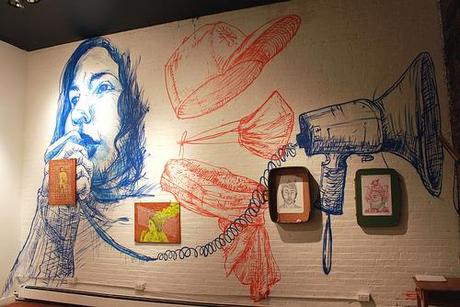
Camila Vallejo (Photo credit: L`N`Y)
Protests can be the catalyst for massive social change, but are more often than not little more than cathartic futile gestures that make their participants feel empowered, but do little to create real change. In ‘mature democracies’ that most of us live in, the days in which thousands upon thousands of people could be motivated to act, driven by a sense of power, if not idealism, seem all too distant.
This is not the case in the newer, more youthful democracies that are growing and developing across Africa, Asia and Latin America. The Arab Spring has swept several dictators from power, as millions cast of social, if not economic oppression. Today we shall look beyond the well-trodden matter of revolution in the Middle East, and over to Chile, where elections are about to propel a coalition of trade unionists, student protesters and environmentalists, united by a refreshing sense of idealism and rejection of the status quo, into congressional office next month.
The South American nation has been building up for this for two years since the outbreak of student protests against the privatised education system, lack of resources for education and the obscene levels of inequality that exist in Chile. The protracted protests, which include secondary school and university students, have fatally damaged the government’s political standing despite its offering of limited concessions to its youthful opposition. The right-wing Alliance coalition President, Evelyn Matthei, is almost certain (polls place her support at just 17-25%) to be defeated by the Social Democrat candidate Michelle Bachelet, provided the progressive vote is not too heavily split. However, the protest leaders are likely to be major constituents of the congressional majority that Bachelet will need to build.

Democracy Flag (Photo credit: pipcallas)
The two highest profile student protest leaders, Giorgio Jackson and Camila Vallejo, are following different paths to elected office. Jackson is running as an independent with the slogan “now is the time” whereas Vallejo is part of the Communist Youth Party. It is not party labels that divide these people though: a shared belief in hard-left values and the need for change is the defining position of these twentysomething politicians.
These people are not calling for Venezuelan-style “Bolivarian Socialism” or the tame social democracy that dominates the global Left today. They are true economic democrats, with a clear vision of a future in which values and people come before profit and the public is valued equally with members of a shrinking elite. There is little doubt that these people have good intentions, but will they follow their radical predecessors in selling out as they inch closer to power? Nobody can say for certain, but these radicals have stirred an instinct in the Chilean public that leaves them unlikely to forgive those who betray their values. Jackson, in common with other protestors turned independent candidates, has no party machine to support him should he lose support.
The protesters should have little excuse for failing to achieve their core aim: universal public education. Michelle Bachelet has spoken of the need for radical “structural reforms” to the economy and the education system, hinting at her willingness to work with the coalition of protesters to achieve this. She knows that her Social Democratic Party will lose credibility if it persists with the unpopular neo-liberal programme that cost it so much goodwill in 2010. The will is there, but any reforming left government is likely to run into such intense opposition from a large number of vested interests that it will lose office or give up, as the Mitterrand government of France did in the early 1980s. There will be tough times ahead, but Chile will win as long as its new leaders retain the youthful idealism that came to life two years ago.

